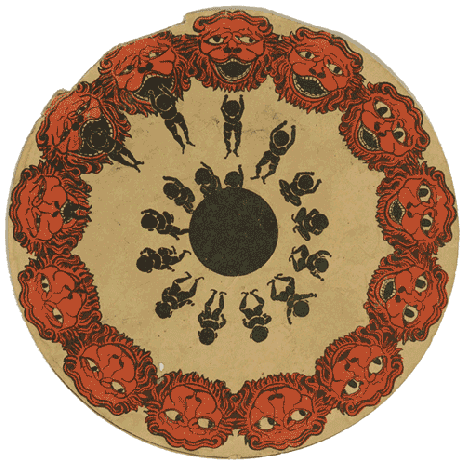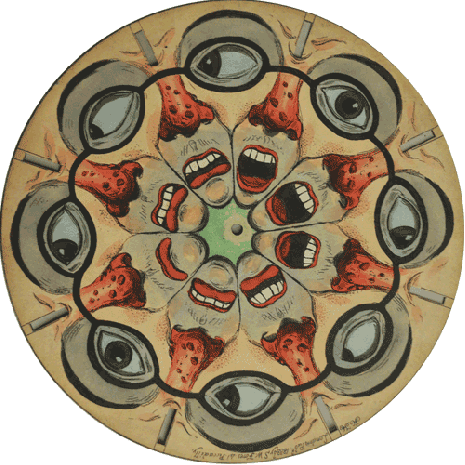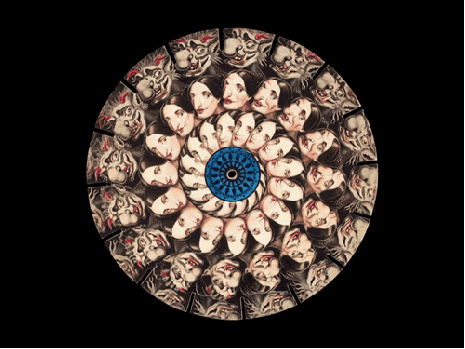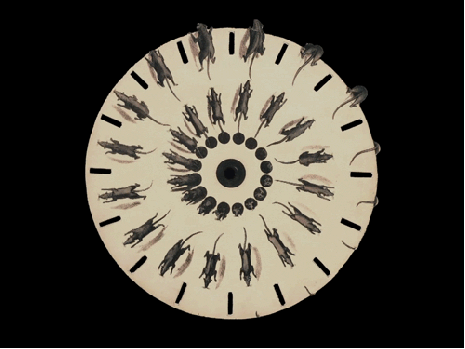
Decades of experimentation (and fun, by the way) were necessary before even the most rudimentary cinema equipment could be made in the 1890s. The great Eadweard Muybridge’s photographic experiments with the physical motion of humans and horses happened in the 1870s, but even when little Eadweard was a tot, in the 1830s, there were plenty of amusing gadgets around that depended on the persistence of vision. They went by a bunch of different names, including the zoetrope, the phantasmascope, the fantascope, the stroboscope, and the phenakistoscope.
“Phenakistoscope” was the term favored by a Belgian inventor named Joseph Plateau. (The term “phenakistoscope” comes from the Greek phenakizein, meaning “to deceive.”) Plateau’s idea was to put 10 images or so around a circular plate, each image being slightly different to its neighbor and the entire set of images being cyclical in nature, such that when the image was spun rapidly and the viewer’s gaze was interrupted by as many equally spaced radial slits on the disc as there were separate images, a cyclical set of moving images would emerge. You would have needed a mirror to use the phenakistoscope; other devices used a second disc to supply the visual interruptions.
I find all of the phenakistoscope images below utterly delightful and charming. They’re all wonderfully imaginative (some are even a little disturbing), and they were all painstakingly executed without any kind of mechanical reproduction, of course—no computers to duplicate the images or to help indicate exactly where the neighboring image should occur. (Actually, I’m not 100% sure that all of these images date from the 1830s, but at least a couple of them definitely do.)
Anyone interested in these devices is urged to visit Richard Balzer’s website or his Tumblr—you’ll find an endless array of delightful 19th-century visual trickery there.




via This is Colossal
Previously on Dangerous Minds:
Marcel Duchamp’s Anemic Cinema
Victorian photo booth